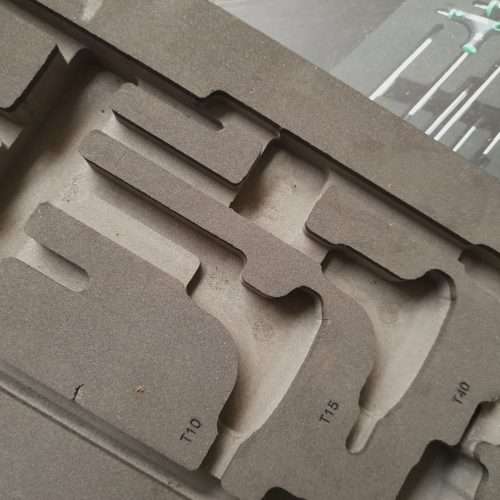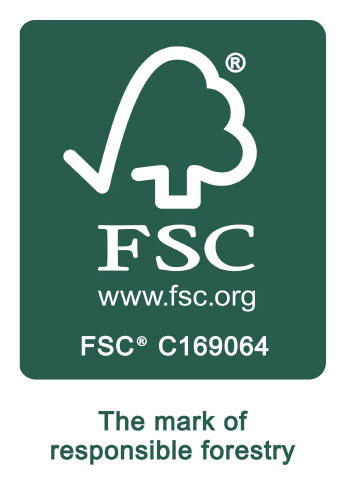Foam inserts have been widely used as an effective means of protecting goods in transit. This is because the dense cell structure makes it easy to cut bespoke shapes that hold items securely in place. Having said this, many of our customers are asking for alternatives to foam packaging as part of their sustainability goals.
In this article, we’re exploring the advantages and disadvantages of foam, along with some viable alternatives.
Advantages of Foam Packaging
Foam is often used as an insert or lining for cardboard cartons. It is a useful packaging material for holding items that are prone to, or could cause, damage during shipping. This includes electronic items, weight tools or fragile goods. Effective at absorbing shock and vibrations, foam prevents items from getting scratched or dented.
Another advantage of foam is how straightforward it is to cut. Specific designs can exactly replicate the dimensions of the items to be placed into the foam, as illustrated in the image of tool packaging. In addition to protection, this adds to the presentation of items when boxes are opened.
The sturdy, yet cushioning nature of foam has helped to minimise damage and waste of many goods, so what are the disadvantages?
Disadvantages of Foam Packaging
The primary issue with foam trays, box linings and end caps is that they contain plastic. Consequently, they are not biodegradable. With the introduction of the plastic tax, many companies are actively cutting products and packaging with plastic content to reduce costs.
Some foam products, including Statocell and Ethafoam, can be reused and even recycled, yet not in roadside collections. When packaging is difficult to recycle, most consumers will bin it, meaning foam inserts are widely discarded after a single use. There are low-plastic foams on the market, but these are still not an option for any brands seeking plastic-free packaging.
Alternatives to Foam Packaging
There are two main plastic-free alternatives to foam packaging; void fill or shaped corrugated cardboard.
Void fill includes biodegradable nuggets, scrunched kraft paper and shredded paper or cardboard, which can be used to separate items and prevent damage.
Corrugated cardboard is a widely used material for boxes, yet it is also effective as an insert to divide or hold items in place.
These options are made from recycled materials and are both biodegradable and widely recyclable.
When companies approach us with a request to replace foam with a sustainable solution, we consider the packaging as a whole. Sometimes, altering the design or dimensions of the box can reduce the need for fillers. We also consider the products to be shipped and specific areas of vulnerability.
Switching from Foam Packaging
The Packaging Design team at Aylesbury Box Company have created viable, plastic-free alternatives to foam. Each is tailored to the requirements of the company and the products to be shipped, with no compromise on protection. Our customers benefits from sustainable packaging solutions and their customers can easily recycle all packaging materials.
A few examples include:
Lode Audio is a company creating a range of products offering world-class, tailored audio solutions for private and commercial use.
We removed the foam and designed a box with corners that lock-in. This feature holds their products securely in place. It proved to be an effective solution that reduced both the volume and cost of packaging.
Avidity Science is a global specialist in water purification and environmental monitoring laboratory equipment.
They needed a safe and secure means of transporting samples for analysis. Foam had been relied on for years, but with a focus on sustainable packaging, they needed a new option. We designed bespoke cardboard inserts to firmly hold items in place.
Zioxi is an innovative company providing smart furniture that enables workplaces and learning spaces to fully benefit from technology.
As an environmentally-focused brand, with ISO 14001, we helped them to replace the foam with sustainable corrugated cardboard packaging. Our solution had to be sufficiently robust for shipping large items of furniture and protecting it from damage and we stepped up to the brief.
If your company is keen to switch from foam packaging to a sustainable alternative, Aylesbury Box Company are willing to advise. Get in touch on 01296 436888 or enquiries@abcbox.co.uk to discuss your requirements.

